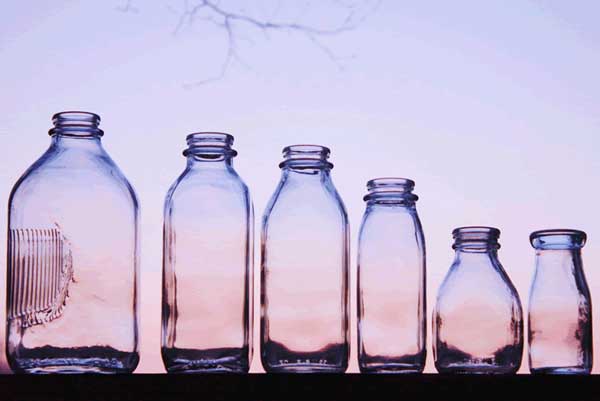The returnable glass bottle market will be valued at USD 19.1 billion in 2024. The market’s progress is projected to invigorate slowly from 2024 to 2034, with a CAGR of 3.00%, compared to 1.90% in 2023. By 2034, the market value is forecasted to hit USD 26.5 billion.
Growing trend toward sustainability and environmental consciousness among consumers. Returnable glass bottles offer an eco-friendly alternative to single-use plastic bottles, known for their environmental harm. By reassuring the use of returnable glass bottles, consumers can reduce their carbon footprint and contribute to a more sustainable future.
The desire for higher quality products is skyrocketing day by day. Glass bottles are known to preserve the taste and quality of beverages better than plastic bottles, which can leach chemicals into the beverage over time. This is particularly important for alcoholic beverages such as wine and beer, which require a certain level of quality and taste to be enjoyed to the fullest.
Request Your Sample Now – Unlock Growth Potential and Discover Key Market Opportunities!
Returnable glass bottles are more cost-effective in the long run. While they may be more expensive to produce and transport initially, they can be used repeatedly, reducing the need for constant manufacturing and distribution of new bottles. This can result in significant cost savings for beverage companies, which can then be passed on to consumers in the form of lower prices.
Returnable glass bottles also offer a number of logistical advantages. They are more durable and less prone to damage during transport, reducing the likelihood of waste and breakage. They can also be easily sanitized and reused, which is particularly important in the current climate of heightened awareness around hygiene and cleanliness.
“Regulatory and legislative changes also impact the market positively. Many governments around the world are implementing measures to reduce plastic waste and encourage the use of more sustainable packaging materials. This has resulted in an increased demand for returnable glass bottles as a viable alternative to plastic.” Says a Lead Consultant Ismail Sutaria in Packaging at Future Market Insights (FMI).
Key Takeaways from the Returnable Glass Bottle Market
- The returnable glass bottle market is estimated to register a CAGR of 3.00%, reaching a valuation of US$ 26.5 billion by 2034.
- The type I segment is anticipated to dominate the market by holding a 51.2% market in 2024.
- The returnable glass bottle market in the United States is estimated to develop at a CAGR of 2.4% through 2034.
- The returnable glass bottle market in Germany is projected to increase at a 2.0% CAGR through 2034.
- The returnable glass bottle market in China is anticipated to develop at a CAGR of 5.9% through 2034.
- The returnable glass bottle market in Japan is projected to inflate at a CAGR of 2.6% through 2034.
Competitive Landscape
The market is highly diverse and dynamic, with a wide range of players operating in it, ranging from small regional companies to large multinational corporations. These companies are constantly investing in research and development to enhance the quality and durability of their glass bottles. The increasing awareness among consumers about environmental issues has led to a higher demand for eco-friendly packaging solutions, which has further intensified the competition in the market.
Key Players
- Del Monte Foods, Inc.
- Green Giant
- Native Forest
- Libby’s
- Whole Foods Market
- Nature’s Greatest Foods
- 365 by WFM
- Farmer’s Market Foods
- Good & Gather
- Reese
- Old El Paso
- Rotel
- Goya
- Rosarita
- Great Value
- Cento
Recent Development
In 2022, Vetropack, a glass packaging manufacturer, has taken a step towards reducing the environmental impact of packaging by introducing a new returnable glass bottle. The bottle is designed with a lightweight feature that makes it easier to transport and reduces carbon emissions during transportation. This move by Vetropack is not only beneficial for the environment but also makes it easier for consumers to return and reuse the bottles.
Key Segments
Grade:
- Type I
- Type II
- Type III
Manufacturing Process:
- Blown
- Tubing
Capacity:
- Less than 50 ml
- 50 – 200 ml
- 201 – 500 ml
- 501 – 1000 ml
- 1001 ml & Above
End Use:
- Food
- Beverages
- Pharmaceuticals
- Personal Care & Cosmetics
- Chemicals
- Other Industrial
By Region:
- North America
- Europe
- Asia Pacific
- Middle East and Africa
- Latin America
About Future Market Insights (FMI)
Future Market Insights, Inc. (ESOMAR certified, recipient of the Stevie Award, and a member of the Greater New York Chamber of Commerce) offers profound insights into the driving factors that are boosting demand in the market. FMI stands as the leading global provider of market intelligence, advisory services, consulting, and events for the Packaging, Food and Beverage, Consumer Technology, Healthcare, Industrial, and Chemicals markets. With a vast team of over 400 analysts worldwide, FMI provides global, regional, and local expertise on diverse domains and industry trends across more than 110 countries.
Contact Us:
Future Market Insights Inc.
Christiana Corporate, 200 Continental Drive,
Suite 401, Newark, Delaware – 19713, USA
T: +1-347-918-3531
For Sales Enquiries: sales@futuremarketinsights.com
Website: https://www.futuremarketinsights.com
LinkedIn| Twitter| Blogs | YouTube
